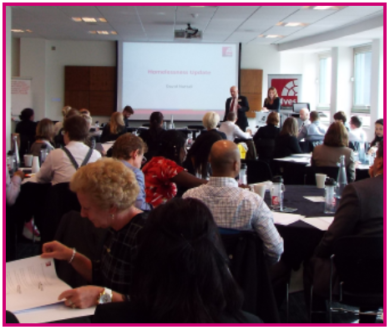Housing Update: Homelessness and the need to consider a “foreseeable future”
Homelessness and the need to consider a “foreseeable future” (Safi v Sandwell Borough Council [2018] EWCA Civ 2876)
In Safi the court of appeal took efforts to clarify what information was relevant and ought to be considered by local housing authorities when reaching homelessness decisions. It distills the need to consider the “foreseeable future” as well as the circumstances at the date of the decision or review in making such decisions.
The case concerns a rejection by Sandwell Borough Council of an Application by Mrs Safi for alternate, larger accommodation to house her growing family. Sandwell, in a decision upheld by two review panels, decided that the applicant was not “homeless”, so as to give rise to a duty for Sandwell to provide suitable accommodation for the appellant and her family under Part VII of the Housing Act 1996. The Review panel assessed that (1) Mrs Safi and her family were on the housing register and would likely be rehoused within a reasonable time if it they were more flexible, and (2) that it was reasonable for Mrs Safi and her family to continue to occupy their current flat on assessment of the family as it was at the time of the decision/review. The County Court concurred with Sandwell and held that the Council had no duty under the HA 1996 to provide Mrs Safi with suitable accommodation.
Background
Mrs Safi was granted tenancy of an one bedroom flat in Smethwick under a secure tenancy in 2012. Initially she occupied it alone but in 2013 she married and her husband also began residing at the property. In July 2015 their first child was born. In November 2015, Mrs Safi applied for new accommodation on the grounds that it was no longer reasonable for her to occupy the flat, as it was, she said, overcrowded, damp and in disrepair, and difficult to access with a pram and baby. Sandwell, however, refused to make any enquiries on the basis that Mrs Safi could not be homeless, within the meaning of the HA 1996, as she currently had somewhere to live and the alleged disrepair had been resolved.
Subsequent to a formal application, Sandwell informed Mrs Safi under a s.184 decision that she was not found to be homeless or threatened with homelessness within 28 days and therefore her application had been rejected and the s.175 criteria was not satisfied. The letter of review sent by Sandwell did state that Mrs Safi and her family would be registered on a waiting list for larger accommodation.
Review decision
The Community Law Partnership (CLP) acting for Mrs Safi requested a review of the decision. The Homeless Review Panel meeting upheld Sandwell’s rejection of the application. It noted that Mrs Safi was not homeless or threatened with homelessness, that she currently had a secure tenancy with Sandwell in a property suitable for the household and that she had been given a band 3 rating on the waiting list allowing her to seek accommodation through Sandwell’s allocation process.
However, after the Review Panel initial decision Mrs Safi discovered she was pregnant with a second child, expected to be born in October 2017. Additional representation were made on her behalf that it was unreasonable for 2 adults, a 2 year old and a new-born baby to reside in a one bedroom flat and that there were unsuitable access arrangements to the flat which would be exacerbated upon birth of Mrs Safi’s second child. The original rejection was reinforced and it was added that if Mrs Safi was more flexible with her areas of choice to reside, then she would obtain accommodation through the waiting list within a reasonable period of time.
Appeal
The Court of Appeal, in allowing the appeal, concluded that Sandwell had failed to properly consider the foreseeable future, that being the birth of Mrs Safi’s second child, which would render it unreasonable for the family to continue residing at the current flat. The failure by Sandwell to inform Mrs Safi of her right to make written representations/provide her with the procedure to do so was also cited as a reason for the success of the appeal, indicating a more robust approach from the appellate courts to procedural defects in homelessness appeals.
The point of significance in Safi is the emphasis that Local Authorities are firmly obliged to consider all relevant factors when making s.184 decisions and in reviewing them. This includes matters which can be determined with reasonable confidence as the “foreseeable future,” such as the birth of a child. As per the Judgmet, if it would be unsuitable for the family to remain in the flat after the birth of the second child, Sandwell should then have assessed how long in the short-term it would be appropriate for the family to remain at the flat and if they would be able to obtain alternate accommodation through the housing list within that time.
The decision may not be a welcome one to landlords, and the question of what constitutes the “foreseeable future” will likely cause some practical difficulty in application. However, the reality of Safi is that that local authorities ought not to be solely looking at the situation at the time of their s.184 decisions and subsequent reviews, but properly consider the impact of any relevant future developments when making those decisions. The clarification at least is a welcome marker for future homelessness decisions.





